Showing 33–48 of 59 results
-
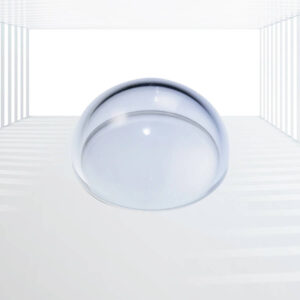
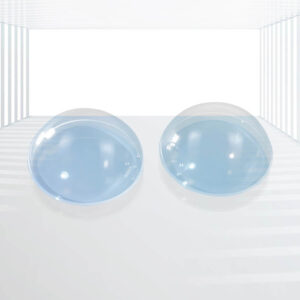
Hardness and Scratch Resistance: Sapphire is second only to diamond in terms of hardness, making it extremely resistant to scratches and abrasions.
Wide Transmission Range: Sapphire domes offer excellent optical clarity across a broad wavelength spectrum, from UV to MWIR, enabling multi-spectral operations.
Ruggedness: The exceptional toughness of sapphire domes makes them suitable for high-speed applications, providing robust protection in challenging environments.
Applications: Aircraft, Industrial, Missile, Scientific Experiments, etc.
-
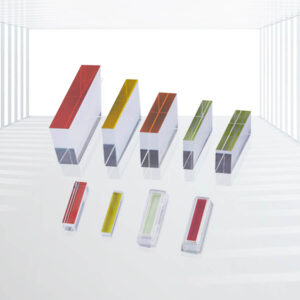
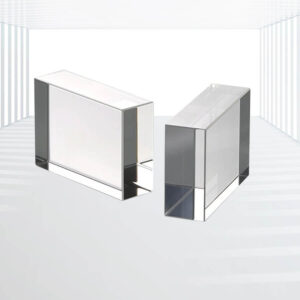
Industrial and Scientific Use: Beyond cosmetic and medical applications, Sapphire IPL light guides can also be found in industrial and scientific settings where precise optical control and high-temperature resistance are essential.
Superior Heat Dissipation: The high thermal conductivity of Sapphire ensures efficient heat dissipation during IPL treatments, reducing the risk of thermal damage to the skin and prolonging the life of the light guide.
Durability and Longevity: Sapphire’s hardness and resistance to scratching make it a durable material that can withstand repeated use and cleaning without degrading in performance.
Precision and Control: Sapphire IPL light guides provide precise control over the delivery of laser energy, allowing for more targeted and effective treatments.
Applications: Cosmetic Procedures, Medical Devices, etc.
-
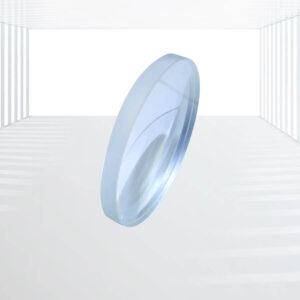
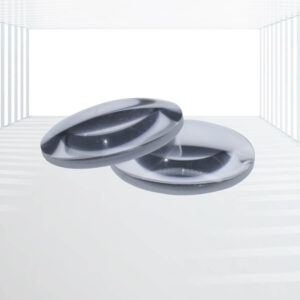
Extremely hard and abrasion resistant: Sapphire has a hardness of nearly 9 on the Mohs scale, second only to diamond, so sapphire lenses have excellent scratch and wear resistance and maintain a surface finish in harsh environments.
High thermal conductivity: Sapphire has good thermal conductivity, which helps to quickly disperse heat inside the lens and prevent fluctuations in optical properties caused by temperature changes.
High Transmittance and Wide Spectral Range: Sapphire lenses have good transmittance in the ultraviolet (UV) to midwave infrared (MWIR) wavelength range, covering a wide spectral range and making them suitable for a wide range of optical applications.
Excellent chemical stability: Sapphire has excellent resistance to common chemical acids and bases, allowing it to be used in corrosive environments for long periods of time without damage.
Thin design: Due to its high hardness and structural strength, sapphire lenses can be designed to be thinner while maintaining sufficient mechanical strength and optical properties.
Applications: Laser technology, Infrared Optics, Aerospace, Medical Devices, Scientific research, etc.
-
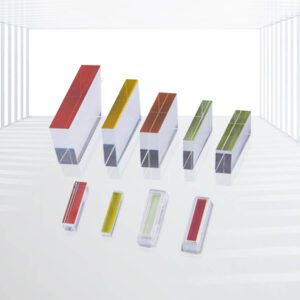
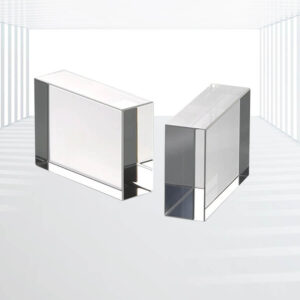
Material Excellence: Sapphire is a prevalent material for manufacturing light guides due to its high opacity to UV light, which is detrimental to human skin, and excellent transmission from the visible to the short-wave infrared spectrum.
High UV Rejection: Sapphire IPL Light Guides effectively filter out UV radiation with a high rejection rate of over 99%, ensuring safety during skin rejuvenation and hair removal treatments.
Superior Optical Transmission: These light guides maintain a high transmission rate of above 95% for wavelengths of interest, ensuring effective treatment outcomes.
Applications: Skin Rejuvenation, Hair Removal, etc.
-
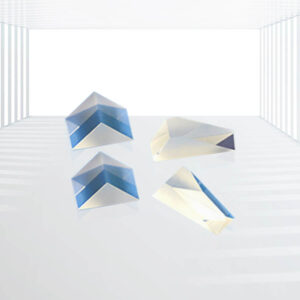
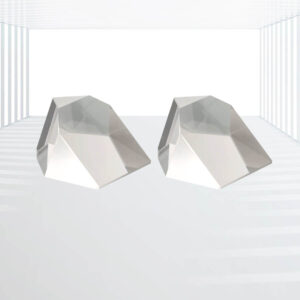
Exceptional Hardness and Durability: Sapphire has a Mohs hardness of 9, second only to diamond, making it highly resistant to scratches, abrasions, and wear. This durability ensures long-lasting performance in demanding environments.
High Thermal Conductivity: Sapphire exhibits excellent thermal conductivity, allowing it to dissipate heat efficiently. This is crucial in high-power laser applications and other environments where temperature control is essential.
Chemical Stability: Sapphire is resistant to common acids and alkalis, ensuring its stability in corrosive atmospheres and harsh chemical environments.
Broad Transmittance Range: Sapphire has good transmittance from the ultraviolet (UV) to the mid-wave infrared (MWIR) wavelength range (approximately 0.15 to 5.5 μm), making it suitable for a wide variety of optical applications.
Compact Size: Due to its superior structural strength, sapphire prisms can be fabricated into more compact sizes compared to those made of other materials, facilitating integration into compact systems.
Applications: Laser Technology, Optical Instrumentation, Aerospace and Defense, Industrial Processing, Medical Devices, etc.
-
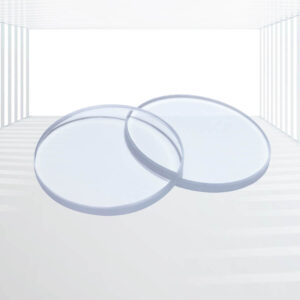
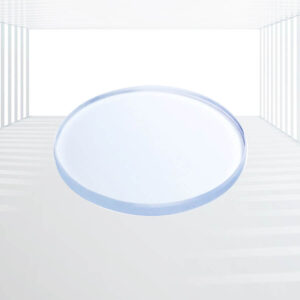
Unrivaled Hardness and Ruggedness:
- Sapphire has a Mohs Hardness of 9, making it the second hardest material after diamond.
- Extremely resistant to scratches and abrasions, ensuring clear optical apertures even under attack from sand/grit.
- Ideal for applications involving splattering abrasive particles, such as drilling viewport windows, protective laser processing windows, and gun sights.
Thin and High-Pressure Resistant:
- Due to firm internal covalent bonding, sapphire windows can be manufactured thinner without fracture compared to dielectric materials.
- Capable of withstanding high pressure, making them suitable for aviation and deepwater contexts.
High-Temperature Tolerance:
- Sapphire has a working temperature limit of up to 1600℃ and a melting point of 2000℃.
- High thermal conduction provides a unique advantage in handling high-temperature situations compared to other optical materials.
- Great options for high-temperature plasma chambers, combustion chambers, etc.
Solid Chemical Inertia:
- Sapphire exhibits chemical inertia to common acids/alkalines, with the exception of hot caustic salts.
- Outperforms other materials in coping with corrosive chemicals and erosive atmospheres.
- Suitable for applications in pharmaceuticals, medicines, and chemical facilities.
Broad Spectral Transmission:
- Sapphire windows offer a broad spectral transmission range of 150nm-5500nm.
- Compared to N-BK7 and UV Fused Silica, sapphire excels with better UV functions, broader IR transmission, and less IR absorption.
- Ideal for critical optical operations in multi-spectrum applications.
Applications: Optical Applications, Protective Applications, Extreme Environments, Chemical and Pharmaceutical Industries, etc.
-
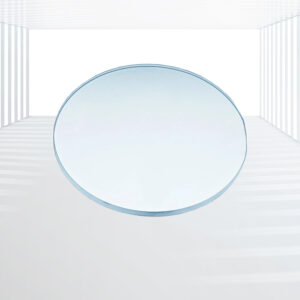
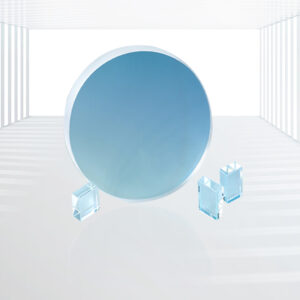
Extreme Hardness: Sapphire’s exceptional hardness provides unmatched scratch resistance, making it ideal for high-wear applications such as watch windows.
Chemical Resistance: The material’s resistance to acids and alkalis ensures durability in various harsh environments.
High Transparency: With a broad transmission range from 0.15 to 5.5μm, sapphire offers excellent optical clarity.
Applications: High-End Watches, Rugged Outdoor Watches, etc.
-
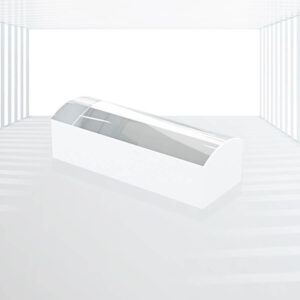
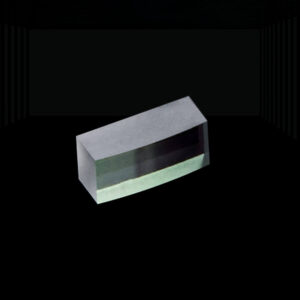
Beam Shaping: SAC-Lenses reshape the elliptical beam emitted by diode lasers into a more circular or symmetric profile, making it easier to focus or collimate further downstream in optical instruments.
Improved Beam Quality: By reducing the divergence angle along the slow axis, SAC-Lenses enhance the overall quality of the laser output, resulting in a high-quality, symmetric beam profile.
Beam Collimation: In addition to shaping the beam profile, SAC-Lenses collimate the beam along the slow axis, ensuring that the beams remain parallel and maintaining beam integrity over long distances.
Divergence Control: SAC-Lenses effectively control the overall divergence of the laser beam by reducing divergence along the slow axis, leading to better focusing and increased range for applications such as laser cutting or engraving.
Applications: Laser Materials Processing, Medical Applications, Optical Instrumentation, Laser Engraving and Marking, etc.
-
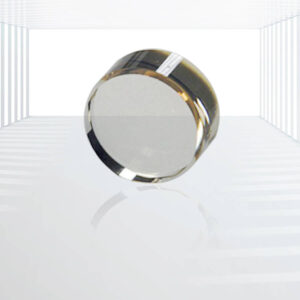
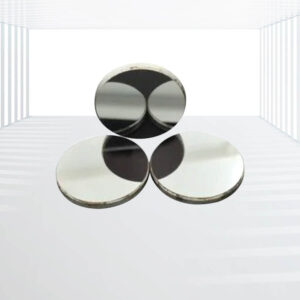
High Reflection and Low Scattering Loss: Our superpolished substrates and mirrors have a roughness of less than 1 Ångström, ensuring high reflection and low scattering loss. This makes them suitable for applications that require precise and efficient optical performance.
Versatile Material Options: We offer a wide range of materials for our superpolished substrates and mirrors, including BK7, UV fused silica, Zerodur, ZnSe, ZnS, Ge, Si, CaF2, MgF2, and Sapphire. This allows customers to choose the material that best suits their specific application requirements.
Strict Quality Control: Our inspection department utilizes advanced equipment such as the Atom Force Roughness Measuring System and the Zygo Interference Flatness Test Instrument to maintain strict quality control. This ensures that every product meets the highest standards of quality and performance.
Fast Delivery: With our efficient production process, we are able to offer fast delivery times to our customers. This ensures that they can quickly and easily obtain the superpolished substrates and mirrors they need for their applications.
Applications: DUV Lasers, Ultra-High Power Laser Systems, Ring Laser Gyroscopes, etc.
-
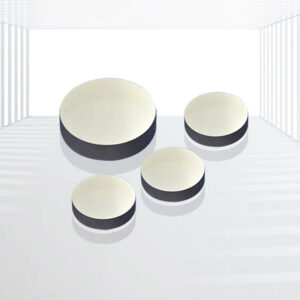
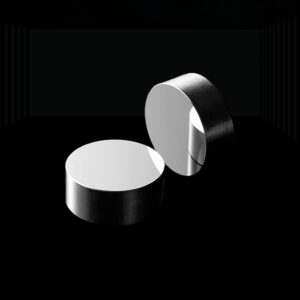
Enhanced Reflectance: The silver coating enhanced with a dielectric coating provides increased reflectance between 600-1000nm, making it ideal for Ti: Sapphire lasers.
Low GDD: The mirrors offer low GDD, minimizing phase distortion and ensuring that ultrashort optical pulses sustain their peak power.
Superior Optical Properties: The UV Fused Silica substrates provide excellent optical properties, mechanical strength, and low thermal expansion.
Cost-Effective: Ultrafast-Enhanced Silver Mirrors are a cost-effective alternative to conventional metallic or dielectric mirrors, offering similar performance without the effects of widening.
Versatile: Kingwin Optics offers stocked and custom ultrafast-enhanced silver mirrors with low GDD, high flatness, and precision, providing versatility for various applications.
Applications: Ti: Sapphire Lasers, Optical Instrumentation, Research and Development, Industrial Applications, etc.
-
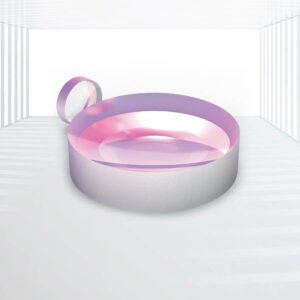
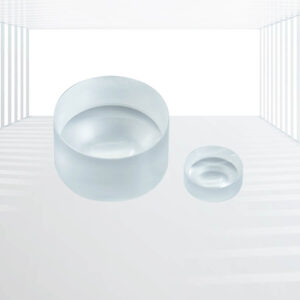
Negative Focal Length: Our biconcave lenses have a negative focal length, making them ideal for diverging collimated light beams to a virtual focal point.
Versatile Applications: They are suitable for divergence of collimated or focused light beams, beam diameter modulation, correction of spherical aberration in optical assemblies, and increasing the focal lengths of lens groups.
Superior Material: UV Fused Silica (JGS1) offers exceptional transmittance to UV wavelengths, while also being widely transparent to visible and NIR wavelengths (200-2200 nm).
Robust Thermal Properties: These lenses exhibit high-temperature endurance and low thermal expansion, ensuring stable performance in harsh working conditions.
Additional Benefits: UV-fused silica lenses have few bubbles/striae, high homogeneities, chemical inertness, mechanical hardness, and advantageous birefringent properties.
Applications: Optical Instruments, Beam Expanders, Aberration Correction, Focal Length Adjustment, UV Applications, etc.
-
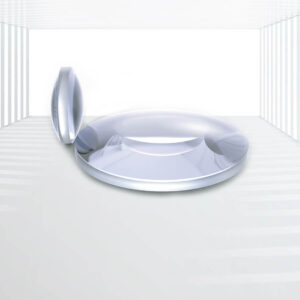
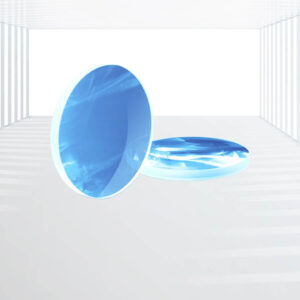
Positive Focal Lengths: Biconvex lenses have positive focal lengths, allowing them to converge collimated light to a point.
Versatile Applications: They are primarily used for laser beam modulation, light focus, and imaging, making them suitable for a wide range of optical systems.Optimal Conjugate Ratio: Biconvex lenses are recommended when the absolute finite conjugate ratio is equivalent to or near 1:1, providing optimal performance in these conditions.
High-Quality Material: Made from UV Fused Silica (JGS1), these lenses offer exceptional transmittance to UV wavelengths, while also being widely transparent to visible and NIR wavelengths.
Excellent Thermal Properties: UV Fused Silica lenses exhibit high-temperature endurance and low thermal expansion, ensuring stable performance in harsh working conditions.
Additional Benefits: These lenses are known for their few bubbles/striae, high homogeneities, chemical inertness, mechanical hardness, and birefringent properties.
Applications: Optical Systems, Scientific Research, Medical Equipment, Aerospace and Defense, etc.
-

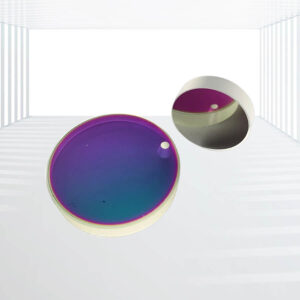
High Reflectivity: Maintains an average reflectance above 98% at an angle of incidence of 0-45°, ensuring efficient light reflection.
Broadband Capability: Offers high reflectivity in four broadband wavelength regions, making it suitable for various optical systems.
Superior Substrate Material: Made of UV fused silica from Corning, known for its excellent optical properties, high scratch resistance, and low thermal expansion.
Advanced Dielectric Coating: Features a broadband dielectric coating with higher reflectivity compared to metallic coatings, making it ideal for ultra-high reflectivity applications.
Durability and Scratch Resistance: Dielectric coating provides enhanced durability and scratch resistance compared to metal mirrors.
Applications: Optical Systems, Research and Development, Research and Development, Industrial Applications, etc.
-

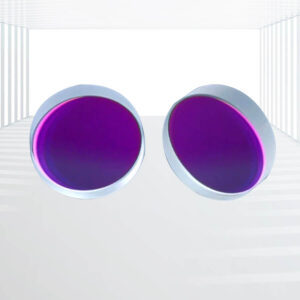
Optimized Reflectivity: Provides high reflectivity in a narrow spectral range around the target wavelength, ensuring efficient laser light reflection.
Durable Substrate: Made of UV fused silica from Corning, known for its superior optical properties, high scratch resistance, and low thermal expansion.
Wide Range of Options: Available in a variety of specifications and options, including laser line mirrors for HeCd lasers, Ar+ lasers, Nd:YAG lasers, HeNe lasers, LD lasers, Yb:KGW/KYW lasers, and more.
High Reflectivity: Average reflectivity above 98% at an angle of incidence from 0-45°, regardless of the polarization state, with enhanced reflectivity up to 99% at 0° incidence.
Standard and Custom Versions: Offers both standard and custom versions of UVFS laser line mirrors to meet specific application requirements.
Low Group Delay Dispersion (GDD): Available in low GDD versions for ultrafast laser applications.
Applications: Laser Systems, Research and Development, Precision Instrumentation, Industrial Applications, etc.
-
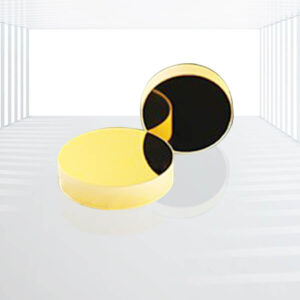

Superior Optical Properties: The UV-fused silica used for manufacturing our mirror substrates is sourced from Corning, known for its superior optical properties, great mechanical strength, and low thermal expansion.
Wide Reflective Spectral Range: Metallic-coated mirrors feature a wide reflective spectral range, making them suitable for applications requiring a broad rejection range.
Cost-Effective: Metal mirrors are less expensive compared to dielectric-coated mirrors, providing an economical option for various applications.
Non-Sensitive to Incidence Angle and Polarization State: Metallic coatings are not sensitive to the incidence angle and polarization state, providing consistent performance across various applications.
Versatile Coatings: Three metal materials are utilized to coat the mirror substrates: Aluminum (Al), Silver (Ag), and Gold (Au), each with its unique reflectance characteristics and applications.
Applications: Laser Systems, Optical Instrumentation, Research and Development, Industrial Applications, etc.
-
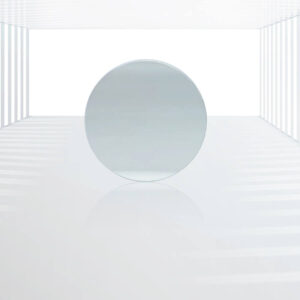
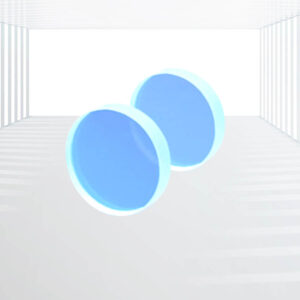
High Transmission: UV Fused Silica material features high transmission in the UV to NIR wavelength range, making it an ideal choice for optical windows and mirror substrates.
Low Inclusion of Impurities: The low inclusion of impure substances ensures high-quality optical performance.
Low Thermal Expansion: UV Fused Silica material has low thermal expansion, ensuring stability and reliability in various temperature conditions.
High Mechanical Strength: The high mechanical strength of UV Fused Silica material makes it suitable for use in demanding applications.
Versatile: Kingwin Optics offers stocked UV Fused Silica windows or mirror blanks with Lambda/4 and Lambda/10 flatness modules, providing versatility for various applications.
Applications: Optical Instrumentation, Laser Systems, Research and Development, Industrial Applications, etc.
































